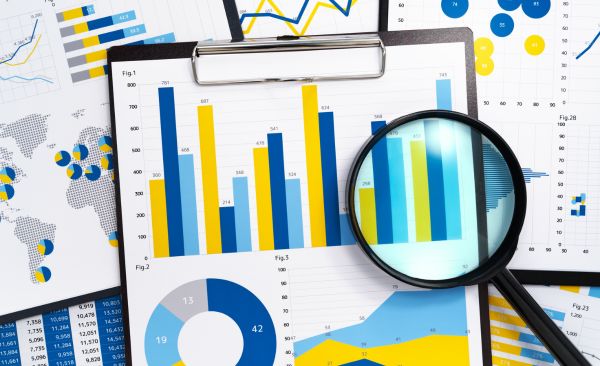Are you a small business owner looking to make sense of the data in your systems? Or, perhaps you’re interested in pursuing a career as a data analyst? If so, it’s time to face the facts – big (and sometimes messy) data is here to stay.
Luckily though, if you have the right know-how, you can use those datasets to uncover meaningful information that could change how your company does business or how your job skills are applied.
That’s what this post will tackle—telling you all about tips and tricks for efficiently turning raw data into insightful stories!
So grab some snacks and get ready – let’s learn how to take confusing datasets and turn them into useful information!
Understanding the Problem

Before you dive into analyzing your data, it’s important to take a step back and fully understand the problem you’re trying to solve.
Why are you analyzing this data in the first place? What questions are you trying to answer?
By having a clear understanding of the problem, you can ensure that you’re focusing your analysis on the right areas and working towards a meaningful solution.
So take a few moments to really think about the problem at hand, it will save you time in the long run and allow you to make the most of your data.
Identifying Your Data

As you begin your data analysis journey, it’s important to identify the specific kind of data that will be most useful to you. Collecting irrelevant data could just clutter and cloud your analysis.
To do this, ask yourself what kind of data will help you answer the questions you have about your problem.
Once you’ve determined what data is most relevant, you’ll then review data sets to identify the specific data fields that you’ll need to incorporate.
Remember, data can come from a variety of sources. So, identify what is needed, and explore where it can be sourced.
If the data is not readily available, design survey questions or consider running a focus group. Get creative!
The more precise and specific your data collection efforts are, the better your analysis will be.
If you need help harnessing your data, join us for our upcoming free training at The Data Ranch! We will quickly make a data wrangler out of you and you’ll be able to understand what all that data you have is trying to tell you! Save your virtual bunk here!
Cleaning Your Data

When you’re working with data, one of the most crucial steps is to clean it up to ensure its quality and accuracy.
This means removing duplicates, correcting any typos, and combining similar fields to create a standardized data set.
By doing this, it’ll be easier to spot patterns and trends, and your insights will be more reliable.
Additionally, it can help reduce the risk of errors and inaccuracies in your analysis.
Don’t worry if the task seems daunting at first, there are many tools and services available that can help with cleaning up your data. It takes time and effort, but it’s well worth it. Trust me, clean data will take your analysis to the next level.
Analyzing Your Data

After collecting and cleaning up your data, it’s time to analyze it for patterns and insights.
This is where things get exciting!
By spotting trends, patterns and connections in your data, you can extract insights that will help you understand your customers, optimize your products and services, and improve your overall business performance.
Remember, not every piece of information is equally important or interesting, so focus on the data that’s most relevant to your objectives.
Whether it’s data visualization tools or regression analysis, there are a ton of great ways to slice and dice your data.
With patience, persistence, and an open mind, you’ll be on your way to developing a fine-tuned business strategy in no time.
Visualizing Your Data

When it comes to sharing the insights from your data analysis, it’s important to present the data in a visually appealing way.
Graphs and charts can help you distill complex information into easy-to-understand visualizations that your team can use to make informed decisions.
Whether you’re presenting to your boss or creating a data dashboard for internal use, a clear and organized presentation of your data is critical to communicating your findings.
With a little creativity, your charts and graphs can become powerful tools that not only show what your data means but also make your presentation more engaging and effective.
Why not experiment with various templates or themes to make your graphs more enticing? It’s all about making your data both visually and cognitively stimulating.
Developing Strategies

Congratulations on finishing your data analysis! But now what?
Once you have identified patterns and insights from your data, it’s important to develop a strategy that will enable you to take action and implement change based on your findings.
This could involve creating a roadmap that outlines specific actions you need to take, or it could be as simple as creating a to-do list that you and your team can prioritize working on.
Remember, data is only valuable if you use it to improve your business.
This is the time to brainstorm, prototype, test and implement your new ideas.
What can you do differently?
What changes could you make in the short and long term to improve your customer’s experience?
Keep in mind that no idea is too small, and every bit of progress counts.
The Wrap-Up

As you can see, effective data analysis and visualization techniques don’t have to be complex or intimidating.
By focusing on these key steps, anyone can quickly turn dense datasets into easy-to-understand displays of valuable insights.
Analyzing your data—and making the most of what it has to offer—doesn’t have to be a daunting process; with the right approach and attitude, it can actually be an exciting and rewarding endeavor.
So plug in those numbers and start looking for hidden patterns!
With the strategies outlined here and a little bit of effort, you’ll be able to uncover new insights from your data in no time.
Happy Datamining!

If you need help harnessing your data, join us for our upcoming free training at The Data Ranch! We will quickly make a data wrangler out of you and you’ll be able to understand what all that data you have is trying to tell you! Save your virtual bunk here!